
The Great Stick PA Roundup
We shake a few sticks at Dr. Bose’s ‘Triple-System’ PA problem and see what rises to the top.
Had a hard time taking stick PAs seriously? Maybe you’ve thought, ‘What’s this anorexic pole going to do that a couple of 12 ’n’ horns can’t?’ I get it, it’s easy to throw stones at the skinny kid, especially when the concept was dreamt up by Bose right around the time of the great 802 decommissioning. Sure, installers were still busy populating airports and exhibition centres with 502s, and plenty of customers were walking out of Hi-Fi stores with a set of satellite surrounds. However, in the pro audio market Bose’s name was making a slow fade out. Extremely slow given how many 802s there were/are out there.
Then the L1 system dropped out of the clear blue sky in 2003. And boy was it hard to wrap your head around. It wasn’t a ‘stick’ PA back then, it was a ‘shadow’ PA. Dr. Bose had dreamed up a solution to a problem no one was even sure they had: the triple-system approach to PA reinforcement. Basically, musicians have amps on stage, they’re then amplified to an audience through the FOH PA, and hear back a different version through the monitor system. Why not replace those three completely different systems with personal PAs for every performer that would resonate behind them like acoustic shadows.
The whole concept of not running the L1 as a PA, but as multiple personal PAs, was a revelation. Actually, it was more of a shock. During the launch, everyone had the same questions on their mind. ‘How’s it not going to turn into mush?’ and ‘How will they not interfere with each other?’ Then, looking the slimline figure up and down: ‘Is it going to be gusty enough? Like a real PA.’
The L1 didn’t immediately replace the ‘triple-system approach’ with its one-size fits all utopian model, and other manufacturers didn’t budge from their well-trodden path of churning out amps, wedges and FOH PAs in great numbers. However, Bose was bullish about its solution and quietly developed the concept many dismissed as hi-fi marketing fluff; trimming down the bulky amp unit, adding a compact option, and extending power for users needing to cover more ears.
In the last few years, other manufacturers have started to pay attention to Bose’s stick PAs, whether they’re buying the shadow concept or not. We decided to round up a gaggle of them to see how they stack up against the original, and find out whether the stick can replace a conventional PA just like Dr. Bose said it should.
THE CONTENDERS
1. Bose L1 Model 1S with B2 Sub & T1 Tonematch mixer
Price: $4275
Frequency Response: 40Hz-12kHz (±3dB), 32Hz-14kHz (-10dB)
Amplifier: 250W RMS (LF), 150W RMS (HF)
Crossover: 200Hz
Max SPL: 118dB Peak SPL @1m
Other Options: You can go all the way down to the $1649 L1 Compact system, with integrated sub and two channel mixer (similar to JBL Eon One). Next in line is the L1 1S and B1 sub without the Tonematch mixer for $2995. Adding the dual 10-inch B2 Bass sub bumps the price up to $3375, and the top end L1 II column with B2 bass — which Bose says can cover 500 patrons — goes for $4175. Add the Tonematch four-channel mixer to any system for $900.

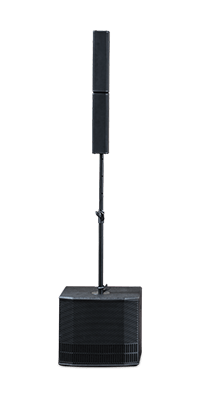
2. dB Technologies ES 503
Price: $2299
Frequency Response: 37Hz-15kHz (-10dB)
Amplifier: 1000W (peak power)
Crossover: 206Hz
Other Options: The ES503 lets you split the two mid highs into a stereo configuration. If you only ever want to perform in mono, the 1200W ES802 system with 12-inch sub is $1999, and the smaller 800W ES602 with 10-inch sub is $1599.
3. HK Audio Line Base Single
2 x E835 mid-high modules & E110 sub
Price: $4999
Frequency Response: 38Hz-20kHz (-10dB)
Amplifier: 600W RMS (LF), 300W RMS (HF)
Crossover: 140Hz (12dB/oct)
Other Options: Elements’ strong suit has been modularity; you can build any system bit by bit. Lately HK Audio has assembled pre-made systems into four different models. The Line Base Single (on review) is the third in the range. The base model $3499 Easy Base Single kicks things off, gradually increasing in power, size and price up to the $6999 Big Base Single. No question, this is the premium-priced system in this line up considering that’s without a mixer.


4. Turbosound Inspire iP2000
Price: $2199
Frequency Response: 45Hz-20kHz (±3dB), 38Hz-20kHz (-10dB)
Amplifier: 1000W (peak power)
Max SPL: 123dB
Other Options: The iP2000 is the top dog, but if you’re willing to swap out the 12-inch sub for a dual-eight inch you can go for the $1599 iP1000, which has the same 1000W column loudspeaker. The $1299 iP500 has a 600W column loudspeaker and single eight-inch sub.
5. JBL Eon One
Price: $1799
Frequency Response: 45Hz-18kHz (±3dB), 37.5Hz-18.5kHz (-10dB)
Amplifier: 250W RMS (LF), 130W RMS (HF)
Max SPL: 118dB (peak)
Other Options: As the name suggests, there’s only one JBL Eon One.

STICK TO YOUR GUNS
Let me be clear, I’m into stick PAs. I’ve had the Bose unit we’re reviewing for about three years now. It’s been used as a PA in practise rooms, at parties, and a few wedding ceremonies in that time. Outdoors, indoors, I’ve even loaned it out a number of times and it’s always worked, always been easy for inexperienced folk to setup, and always comes back with its pieces intact. Apart from being simple to setup and break down — the included soft carry cases make transport a breeze — the part that’s most impressed me, time and again, is the sound.
I’ve used tons of different PAs, including lifting my fair share of 12 or 15+horns onto a pair of sticks. While I’ve heard plenty of impressive-sounding boxes, with loads of power and definition, I’ve rarely heard smaller PAs that sound as natural as the Bose L1 1S. I know, write me off, quick! It’s a Bose for Pete’s sake. But, for what it’s made for; which I would say is primarily playback, vocals, keyboard and guitar. It’s always done its job with a minimum of fuss, which is what you want, right?
The other continually impressive part is the wide coverage pattern of the cylindrical array. I thought I’d only ever need about 50-60 degrees of horizontal coverage out of any one box, unless I was using a line array. That’s to say, I’d never considered a reasonably priced PA for small- to medium-sized rooms with a super-wide dispersion. After all, I could always strap two boxes together if required; coupling be damned. That was, until I put a stick PA in a practise room. Previously we’d been using two speakers in all manner of configurations. Sometimes strapped together to make a wide dispersion, other times splitting them up on either ends of the room, or pointing one at the drummer, the other at the lead vocalist and everyone else just guessing. The stick PA revolutionised all that. Stick it anywhere in the room and everyone can hear it. Problem solved.
Likewise, weddings. No amount of tulle will cover up a big black box on a stand, let alone two of them. Give a bride, or a photographer, the option of a slim column over two big speakers and they’ll throw money at you.
Buskers and meat market spruikers would benefit from a stick PA too. Forget those wheely boomboxes that fling mud at the ankles of passersby. A stick will elevate that ‘don’t be shy ladies’ annoyance to an appropriate ear level. The only things missing are wheels and an extendable handle so you can wheel it down Pitt/Bourke St mall. A rechargeable battery would be a welcome addition too, but we can’t expect the stick to do it all, yet.
Parties? No problems. Sure they might sum playback down to mono, but you won’t have cables stretched across a room, no tripod stands for drunk aunties to knock over, and you’ve got a winner.
As you can see, the humble stick PA solves more problems than just Mr. Bose’s FOH, monitor and guitar amp triple-system PA conundrum. But even amongst our line up of five stick PAs, there are completely different approaches to solving those problems.
BOSE L1 MODEL 1S

dB TECHNOLOGIES ES 503
HK AUDIO ELEMENTS


TURBOSOUND INSPIRE IP2000
JBL EON ONE

JBL EON ONE
While the Turbosound was the quickest to setup, it’s hard to beat the JBL in this category. It goes together quick-smart and the benefit of having all the bits transport as one unit is hard to pass. Again, the Bose L1 Compact is very similar in this regard.
WIRING FOR SOUND: I/O & CONTROL
I’ll start with the HK Audio Elements Line Base Single package, because it’s the easiest to sum up and gives away its position pretty early. It has one combo XLR/jack line input, the rest are outputs (a thru link, and Speakon connections to other passive mid-high and sub options in the range). It’s basically like any other powered PA; supply your own mixer. There’s also no DSP, just a button to select between +4dBU and -10dBV line level, a sub control that ranges from -12 to +6dB with a centre detent, and a knob to select how many column speakers you have connected.
Things get a little more interesting with the Bose Tonematch engine, which is a four-channel mixer (three mics and one stereo line input). The actual base unit only has a 1/4-inch line input, so the mixer is a must if you’ve got a mic. It’s a simple system with gain and level control, as well as a global effects preset you can activate per channel. Unlike the HK — which requires you feed it an already summed mono input — the Tonematch will do the summing for you. It’s similar to the rest of the units, which can all take stereo inputs and output mono. Like the HK, there’s no extra DSP for tuning the PA, it sounds how it sounds out of the box, unless you’ve got an external EQ to play with.
The JBL has a built-in four-channel mixer — two switchable mic/line mono inputs, and two stereo inputs (one with dual 1/4-inch and RCA inputs, the other with a stereo 1/4-inch jack). It also has a Bluetooth input for streaming from your phone, which doesn’t override the others, making it five channels in all. The two mono channels have treble and bass EQ, as well as a switchable reverb. It’s set to what sounds like a ‘Grand Canyon’ preset with a supremely lengthy tail. The tail doesn’t reduce in length as you turn it down either, making it a reverb that could be detrimental in the wrong hands. There’s also a stereo auxiliary RCA output with volume control for feeding a recorder or personal monitor mixer.
The dB Technologies ES503 has an onboard mixer and DSP control, you just have to get at it from a small LCD screen and single dial on the rear of the sub. It’s not the most elegant solution, but all the control is there.
The dB Technologies has a switchable combo mic/instrument input — making it the only PA of the lot to feature a direct instrument input — with gain and level. It then has a pair of line inputs, which can be ganged to create a stereo pair with single control, and a Bluetooth input for wireless playback. Like the JBL, it also has a mixable aux output, but this one is via a single balanced XLR.
The dB Technologies has six different output EQ presets to choose from, including a three-band custom EQ with a sweepable mid band. The Turbosound also has a three-band output EQ, but with a fixed mid-band.
The Turbosound probably has the best control feature set… if you have an iOS device. The rear of the sub houses two combo XLR/1/4-inch mic/line inputs that don’t appear to be linkable, and a Bluetooth connection. The Bluetooth link serves both as a conduit for playback as well as control via the Turbo Control iOS app. Android users are out of luck at the moment, though I did unearth some ‘sweet’ blowoff valve apps on the Play Store if you need some boost for your Chap laps. The app connected seamlessly to my iPhone, and it’s much easier to control the levels via the app than wheeling through the LCD and dial. However, iOS-less users will appreciate the LCD’s sub-top placement over the dB Technologies’ rear-of-sub position. It makes an arduous task slightly less so when you don’t have to lie prone behind the sub.
The app restricts any need to resort to one-knob operation as it can handle channel and master levels as well as a separate control for sub level. Beyond that, there are the controls for output EQ, position-relevant and program-specific tuning, and the Bluetooth connection.
HK AUDIO ELEMENTS
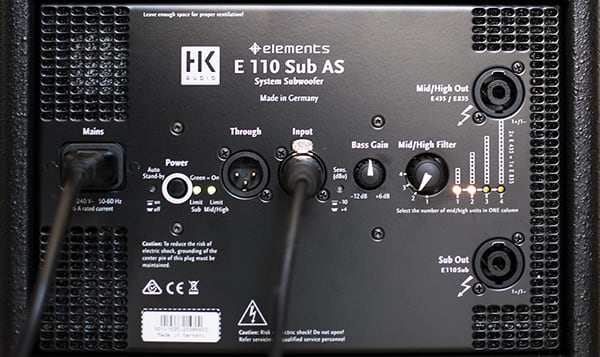

dB TECHNOLOGIES ES 503
TURBOSOUND INSPIRE IP2000

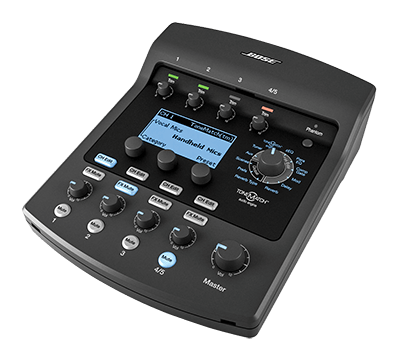
BOSE L1 MODEL 1S
JBL EON ONE

TURBOSOUND INSPIRE IP2000
This is a hard one, but there’s no doubt these systems are used heavily for playback and designed to be discreet. Being able to operate background music playback and your mix wirelessly from a device is a big deal, and the Bluetooth link will roam to 30m. That said, having the right complement of I/O might be more important to you.

BOSE
The Bose system’s wide and even coverage pattern benefits the consistency of the entire package, even when blocked, and delivers a high level of natural feedback rejection. The HK Audio was similarly impressive across these tests.
HOW LOW CAN YOU GO: SUBS
The other half of these systems is down below in the sub. They all did the job, with the Bose, JBL and Turbosound coming across pretty balanced in their standard configurations. The HK Audio was very tuneful and responsive, and the level range was spot on to adjust between speech and playback. The Bose had more than enough power when set to the high setting, but wasn’t as tuneful in some really loud passages. The Turbosound was powerful and well balanced. The JBL added very solid, well-matched support to the top end, which is good considering it’s the only one you can’t adjust separately to the master level. The dB Technologies was the most bass heavy in flat mode, we had to roll it back about 8-9dB from the 0dB setting to get it to sound similarly balanced with the rest.

dB TECHNOLOGIES ES 503
While all the subs did their job, the dB’s single 12-inch had plenty of power when you wanted to jack the low end for playback and had a good thump to it when you vamped on acoustic guitar. Even though its crossover point was relatively high, DJs would really like this unit for its low end power and the ability to set its level independently.
TURNING UP THE HEAT: POWER
While the peak power ratings of the dB and Turbosound look good on paper, the HK Audio had scads more guts than the rest, with the Turbosound splitting the gap between the HK and the rest of the field. While all of them would be comfortable handling a singer/songwriter or acoustic combo, the HK is the one you’d stick behind a band. It went from low to high levels and maintained its composure throughout. While they all comfortably pushed to 90dB SPL (A-weighted) at the FOH position around 10m away, the HK Audio could comfortably push beyond that above 95dB.
The Turbosound, the second loudest of the lot, can almost keep up with HK for level, but doesn’t hold together nearly as well. While the HK kept a similar tonal consistency from low to high levels, the three-way Turbosound system seemed to hit its stride at medium-high levels then started to fall apart at the very extreme. Similarly, the dB sounded better loud, as the top end started to cut through with the level, but didn’t fall apart when pushed to the end of its rope, which probably had more to do with limiter design than power handling.
The Bose and JBL both had consistent voicing — like the HK Audio rig — at all levels. You could hear the JBL trying when it was pushed, sounding a little less natural and more strident up top, while the Bose went the other way and started to get a little mushy. That said, you’re not going to want for level in a 200pax joint with any of these PAs.
HK Audio Elements
FACING THE MUSIC: VOICING
There are many components to a PA’s sound, as you can see. We’ve already covered much of the utilitarian measurable stuff: dispersion, feedback rejection, power. We’ve also had a good listen to the subs, but now let’s have a look at the detail, which is mostly contained in the voicing of the columns themselves.
Here, there were two main camps, those with DSP and those without. Of course, they all have some level of DSP involved to align the columns and limit the outputs; but while the dB Technologies and Turbosound both have adjustable responses based on positioning, program and personal preference, the JBL, Bose and HK Audio PAs don’t. That is, if they don’t sound good out of the box, they’re going to require some extra gear to pull them into line.
Over the course of the day we tested the PAs with a variety of playback sources, vocals and guitar. Basically, the usual variety you’d end up plugging into the back of one of these sticks. We used the church’s Soundcraft Si Expression 3 to level match the PAs and feed inputs to the sends so we could switch between each source and PA easily. We also checked out the Bluetooth, auxiliary and mic inputs separately, but for the shootout, all the inputs were fed into the PAs via the Soundcraft.
Once we had them all fired up, it was hard not to be impressed by the HK Audio system. It’s voiced in a way that pushed the midrange forward right where the vocals are prominent. It means that despite being a mono system, it sounded as if it had more front-to-back dimension than any of the other PAs. Whether it was vocals from a playback source or through a mic, they were very present and forward in the mix. While it was our favourite for vocal reproduction, it brought a lot of the picky string attack on the acoustic guitar, which is not the most favourable focus for a piezo pickup. However, once you mix the two together, the balance between accompanying acoustic and vocal focus was instantly spot on. Every time we came back to the HK, it was always the most present and clearest of the lot. Seeing as it only has a line input, you’re going to have to feed it with a mixer anyway, in which case you could wind a little more body into instruments if required. Notwithstanding, a PA that naturally amplifies your vocals above everything else is a godsend.
The Bose was the most natural sounding of all the PAs. There was no real sense of the localisation you get with a normal point source speaker; where you start to notice the sound is coming from a box. If you had to describe the sensation of listening to a cylindrical array, I’d say the sound emanates from it rather than projects. It’s very enjoyable to listen to with all varieties of program. Guitars sound full-bodied while defined, vocals are clear but not bitey, everything just sounds natural straight out of the box.
The dB Technologies is a very punchy system, but didn’t seem to have the natural-sounding extension of the first two systems. I ended up scooping it in the mid range a bit to tame the band-passed feel, and it opened the sound up more. It’s the benefit of having some DSP control over your output. For vocal reproduction, it still sounded a bit boxier than both the HK and Bose, and felt more congested once multiple sources were added. However, it’s well-suited to playback, and would fit DJ applications best.
Similarly, the Turbosound sounded great on playback, but wasn’t as defined as the HK Audio system when it came to separating sources. While the horn-loaded tweeter is there to boost the ultra top end, it seems that the balance between it and the 16 mid-high drivers only really starts to click when you put some decent level into it. Again, I found myself scooping a few dB out of the mid range, which is easy to do with the output EQ. Though, as you’d expect, using the graphic on the desk to tune it gave far better results.
The JBL is probably the dark horse of the lot. It doesn’t need any DSP, it sounds fantastic straight out of the box. In a similar manner to the Bose, it presented everything naturally and with good balance. It did have a bit more of a localised sound where you could almost hear the speakers working, but it was a small difference. As far as sound goes, it was well-balanced, crisp and reproduced every source naturally.
It’s hard to pick a winner in this, because the HK Audio was very impressive and the Bose was incredibly natural, while the dB and Turbosound really shined on playback sources with their midrange punch. For us though, it’s hard to go past the quality you get for the price with the JBL. We kept going back to it and continuing to be surprised by how good it was.
YARD STICK: CONCLUSION
The stick PA is alive and well. While Bose has stuck to its guns and delivered yet another wide-dispersion column that sounds natural enough to handle any instrument, there’s a wide range of interpretations of what a stick PA can be. The HK Audio Elements line can be used as a heavy-lifting, vocal-focused FOH PA; the dB Technologies ES503 can split up into a powerful stereo DJ setup; the Turbosound can be controlled from anywhere; and the JBL Eon is an all in one package that will go anywhere and do anything. Don’t be scared to try them out, you might find you save yourself space, time and hassle with these skinny wonders.





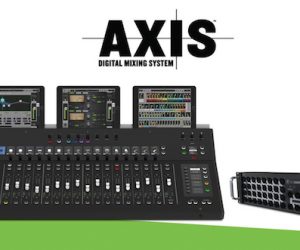
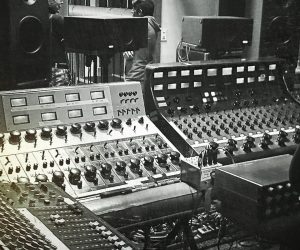


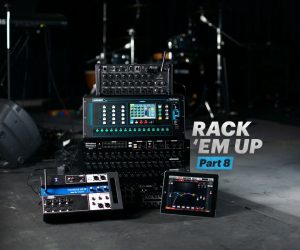

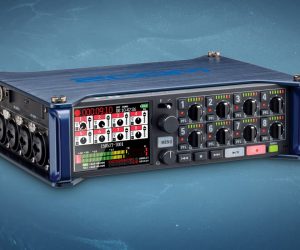






RESPONSES